November 7, 2020 - Bandera Crater and Ice Cave
|
|
We left El Morrow National Monument, headed east, and arrived at the Brandera Crater and Ice Cave. Unlike El Morrow, which was a National Monument, this was a privately owned tourist attraction, started in 1946 by the Candelaria family.
The visit starts at the Old Time Trading Post, pictured below.
|
| |
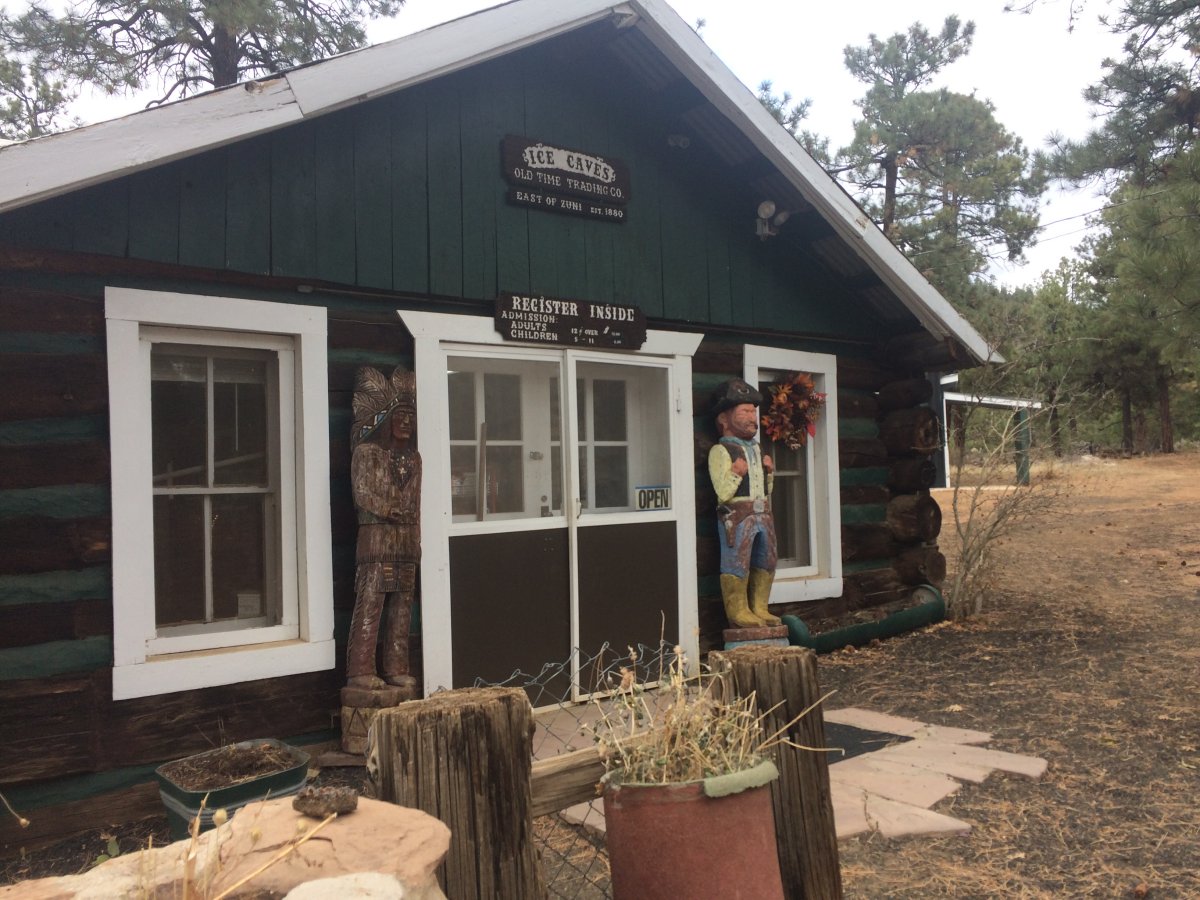 |
|
|
Lynnette and I started out on the trail to the Volcano look out.
|
| |
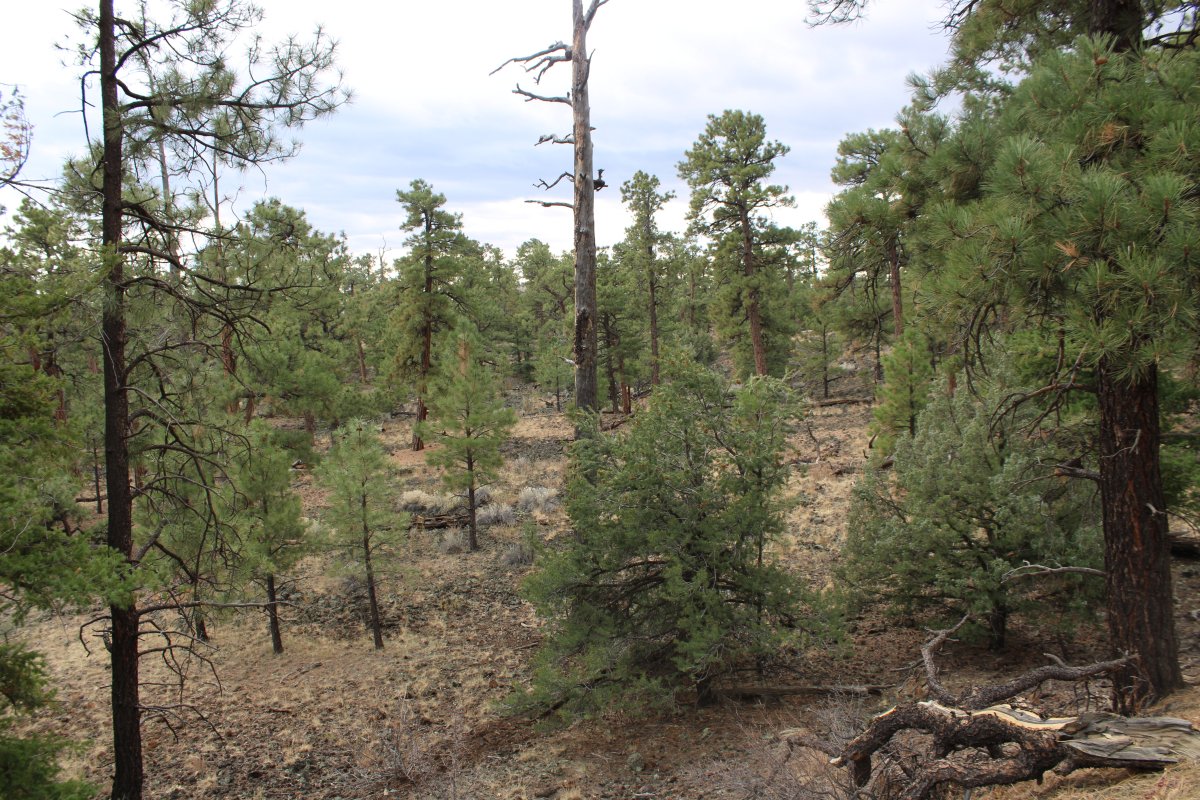 |
|
| |
| |
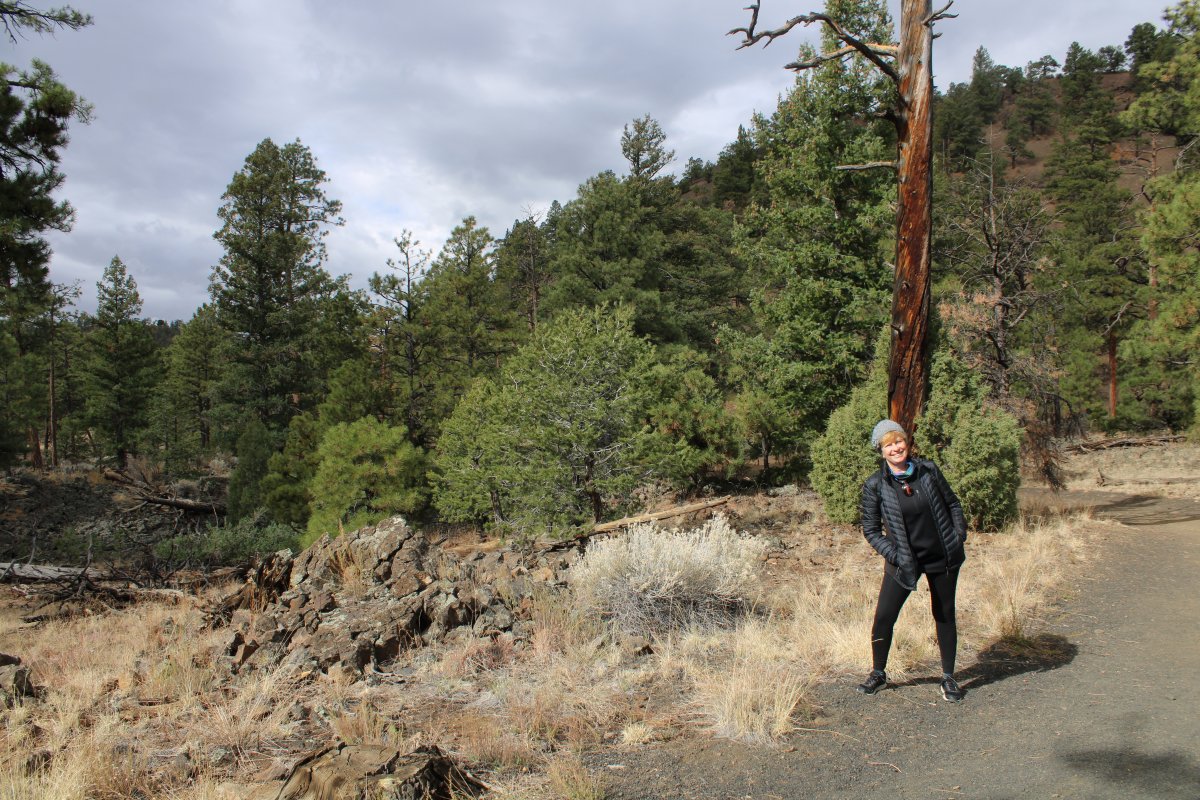 |
|
| Notice the Ponderosa Pines in the background. |
| |
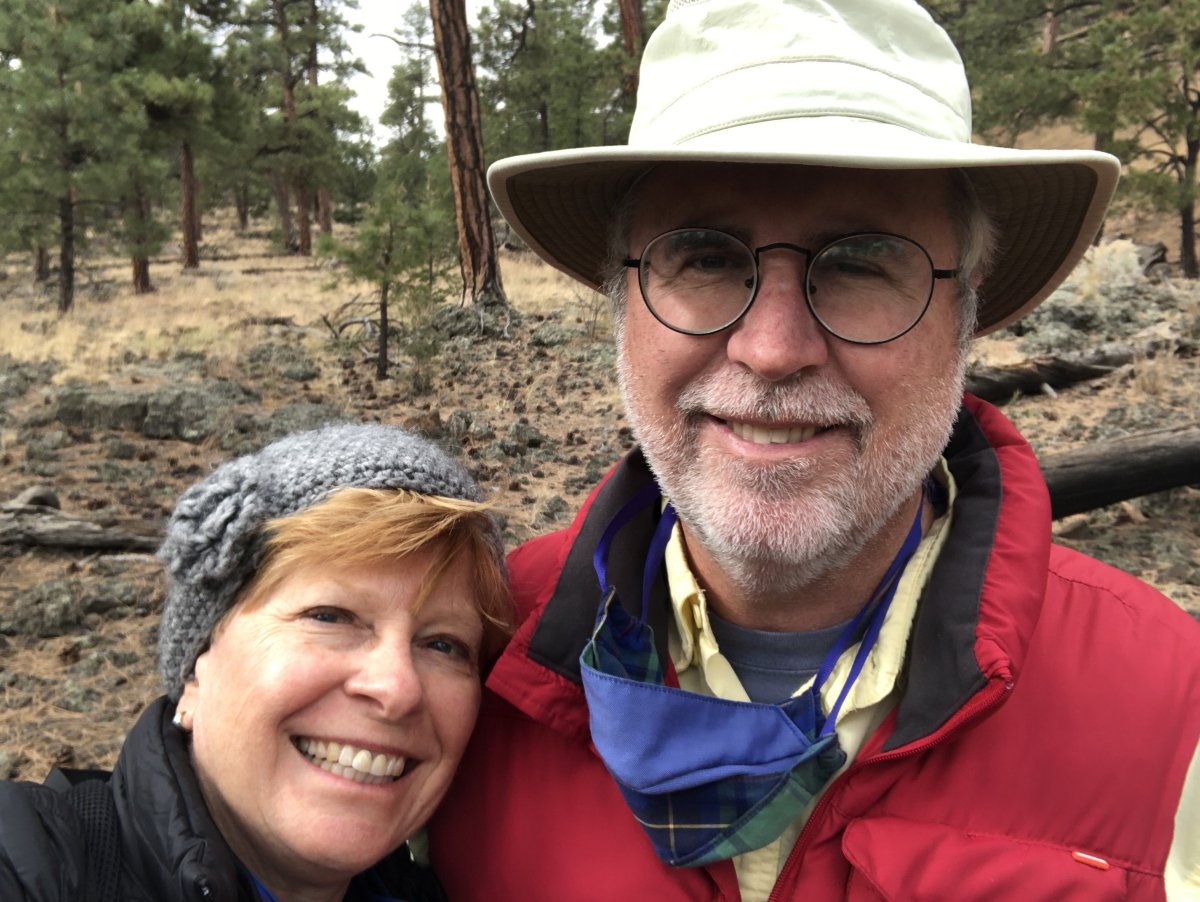 |
|
| Starting to get a little elevation and seeing Pinon Pines. In the distance you can see some of the 29 volcanoes in the El Malpais region. El Malpais is Spanish for "bad lands." |
| |
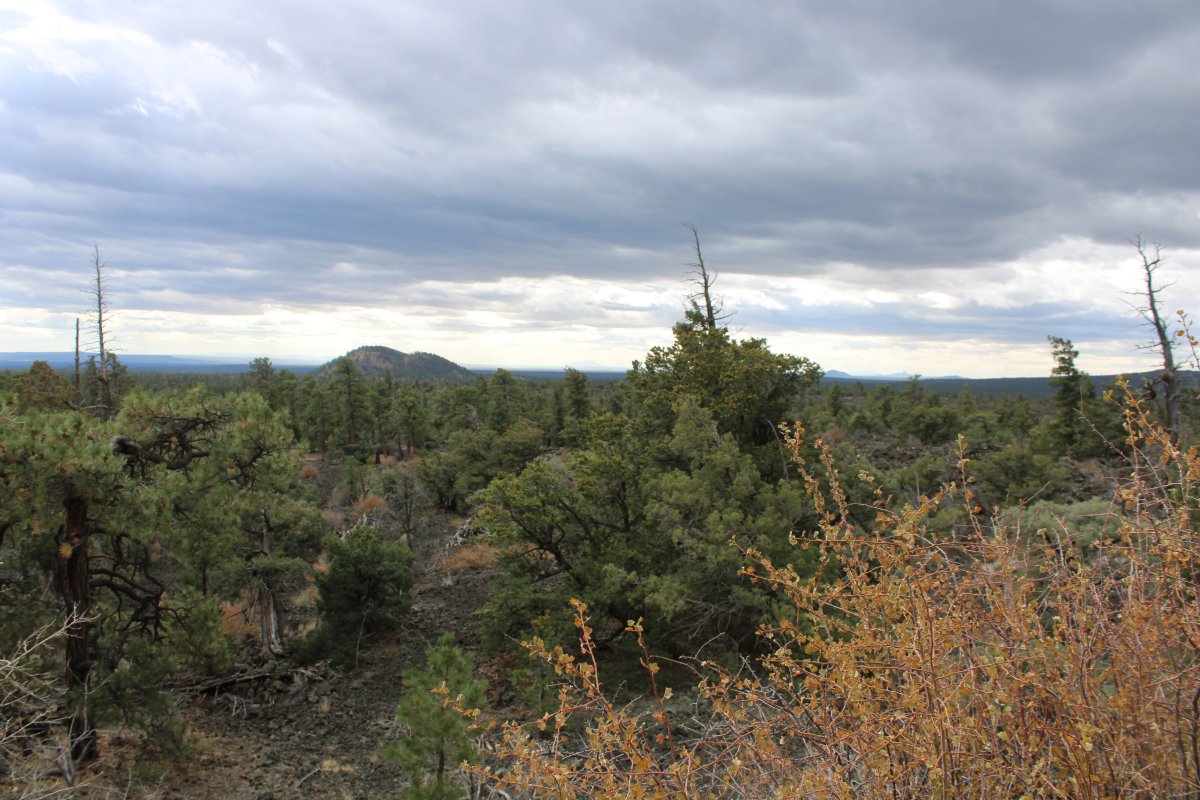 |
|
| There is Bandera's twin: Cerro Bandera. |
| |
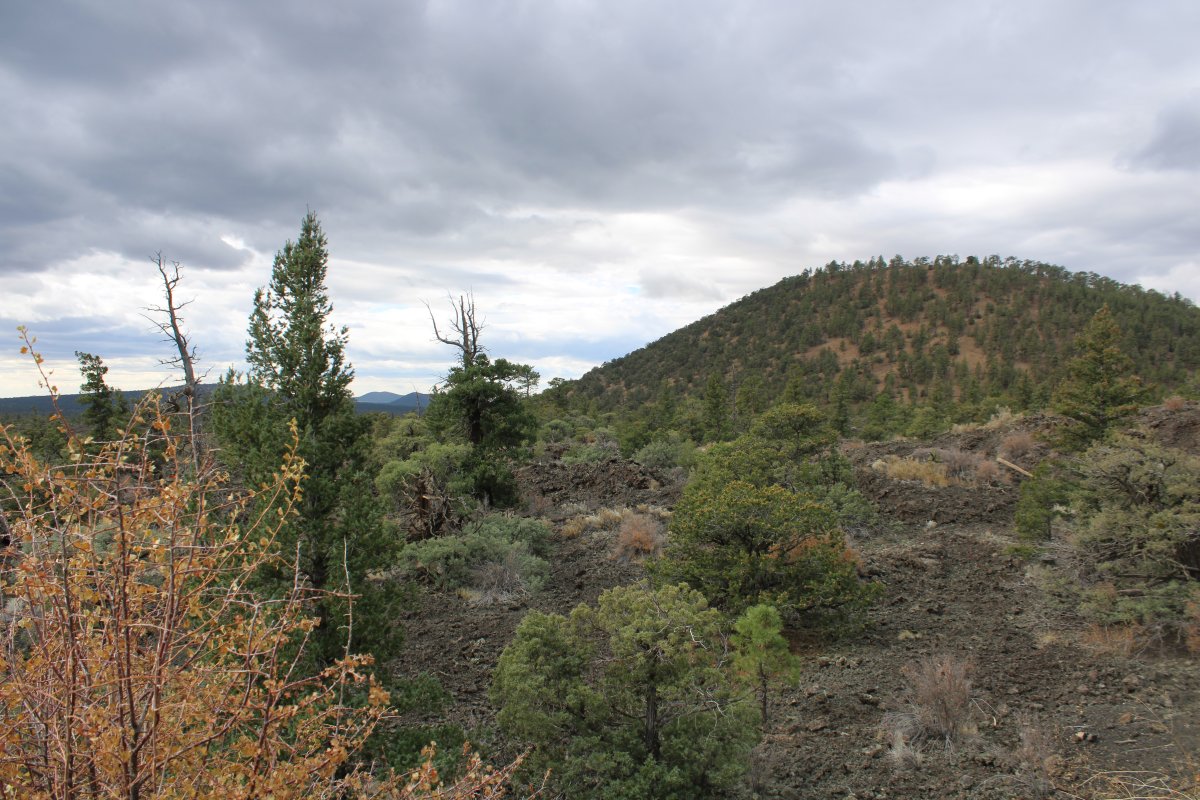 |
|
|
And there it is! The Bandera Crater: the largest volcano in the region.
|
| |
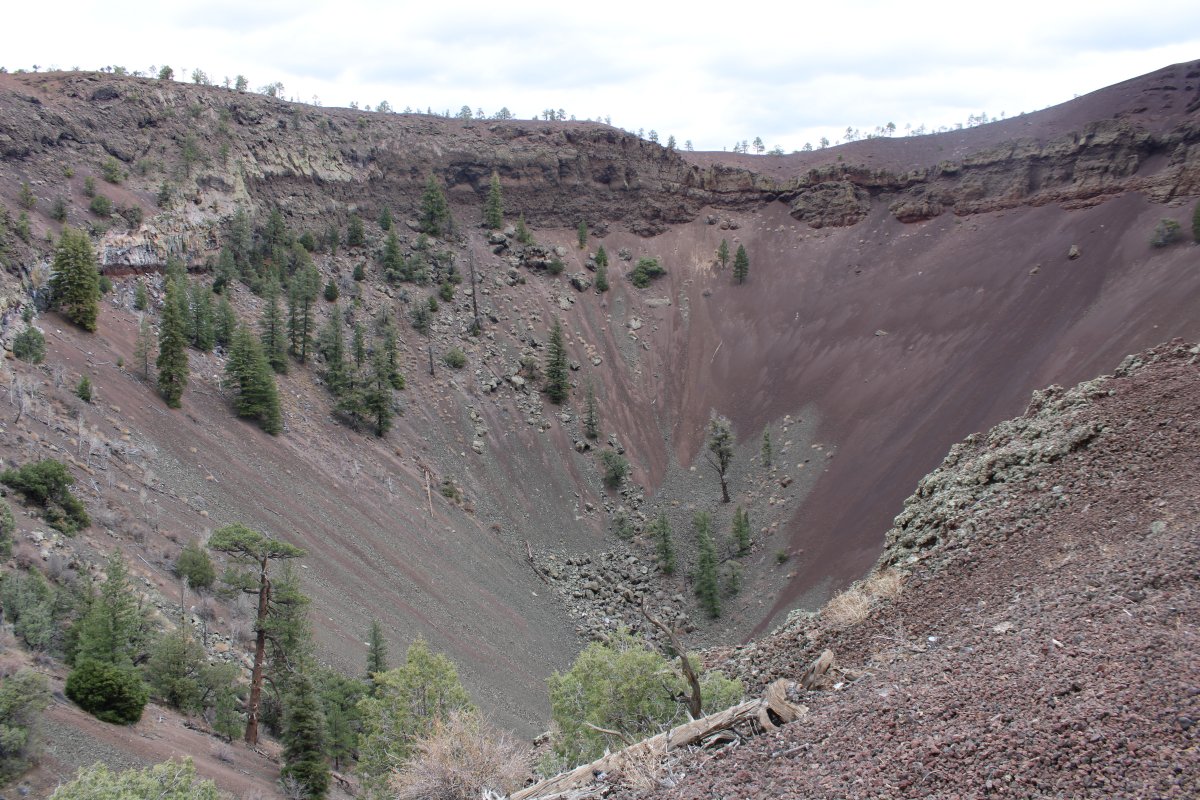 |
|
|
The volcano erupted about 10,000 years ago. The molten lava was above 2,000 degrees Fahrenheit.
|
| |
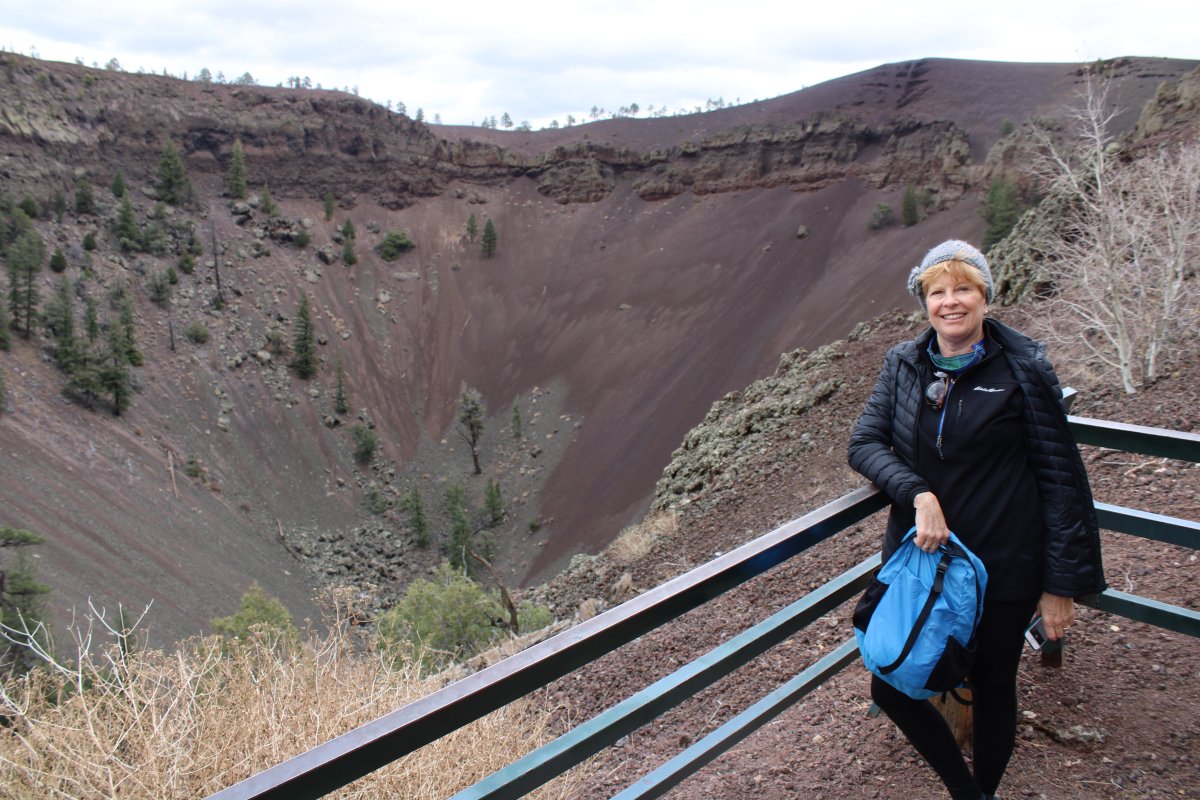 |
|
|
The crater is nearly 1,400 wide at the top and roughly 800 feet deep. The elevation at the rim is 8,367 feet mean sea level.
|
| |
 |
|
| It's kind of amazing how trees are able to grow on the steep insides of the crater. As Dr. Ian Malcom (Jeff Goldblum) said in Jurassic Park, Life will find a way. |
| |
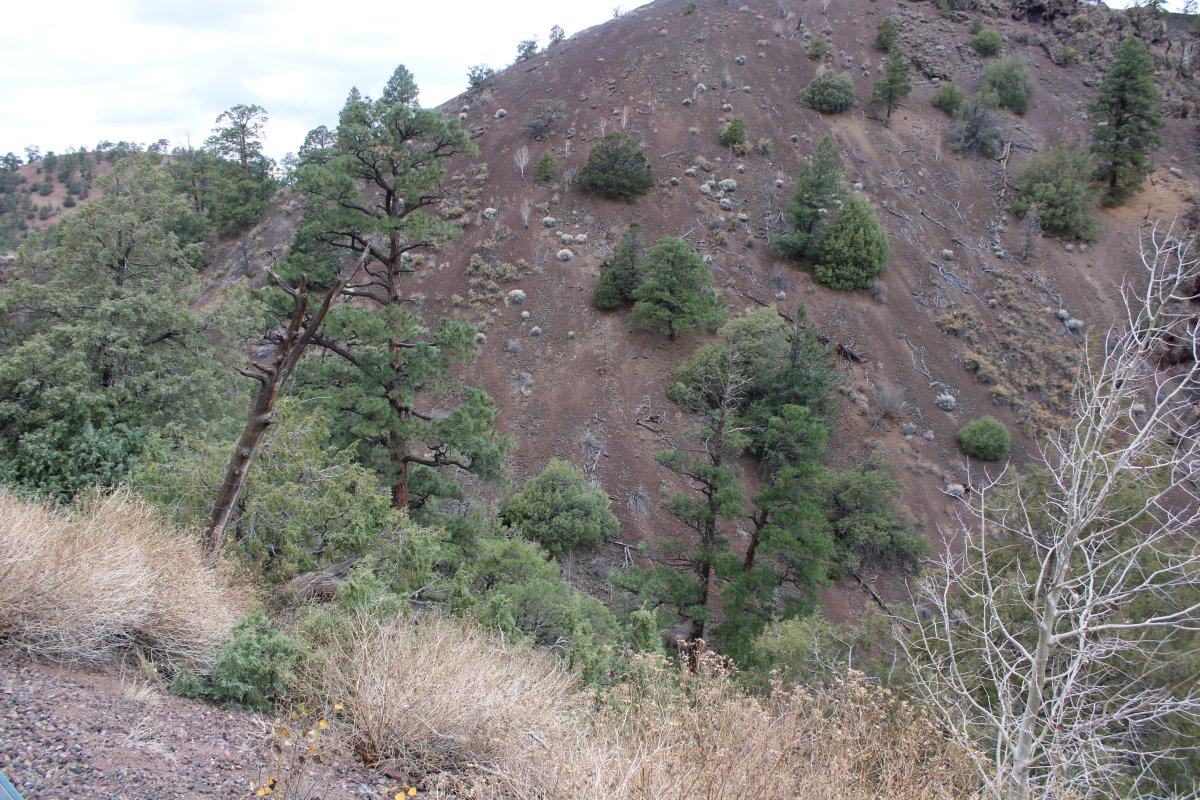 |
|
| A massive lava flow broke out on this side of the volcano, forming a lava flow nearly 23 miles long. |
| |
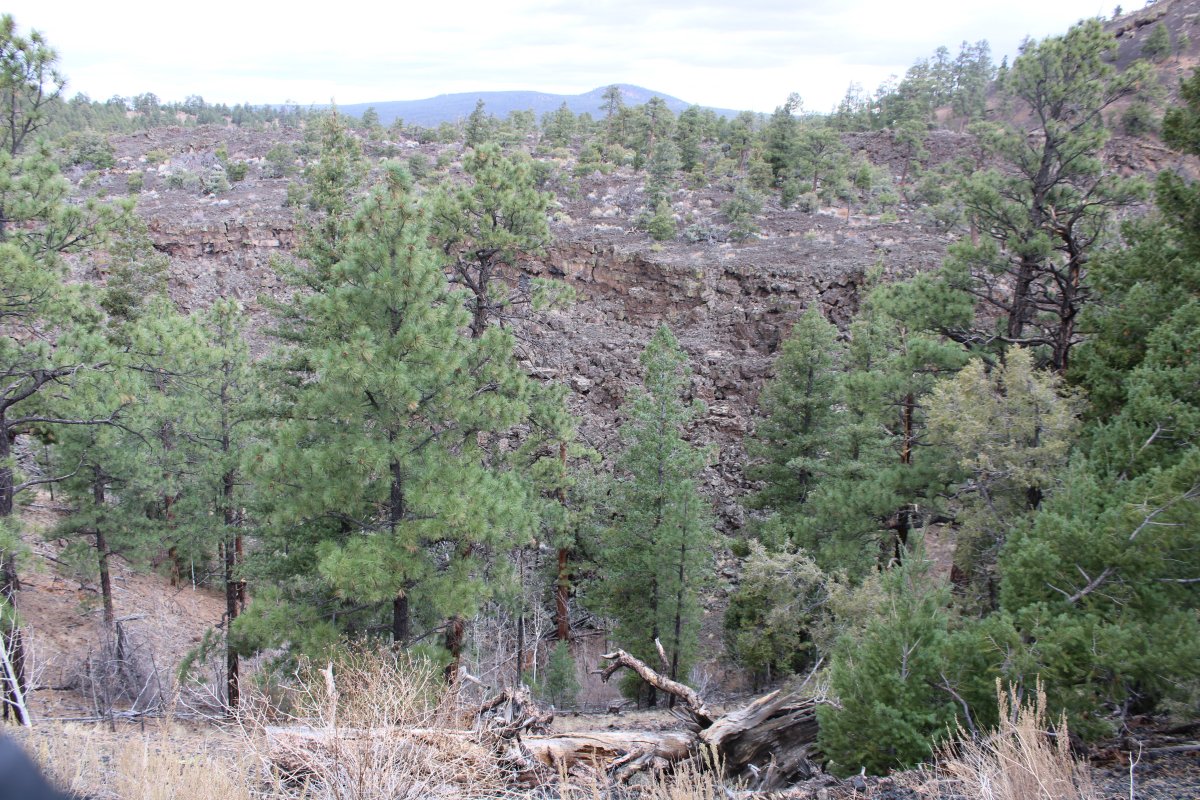 |
|
| Leaving Bandera Crater, now we are on the trail to the Ice Cave, walking what early sheep herders called "the devil's playground". |
| |
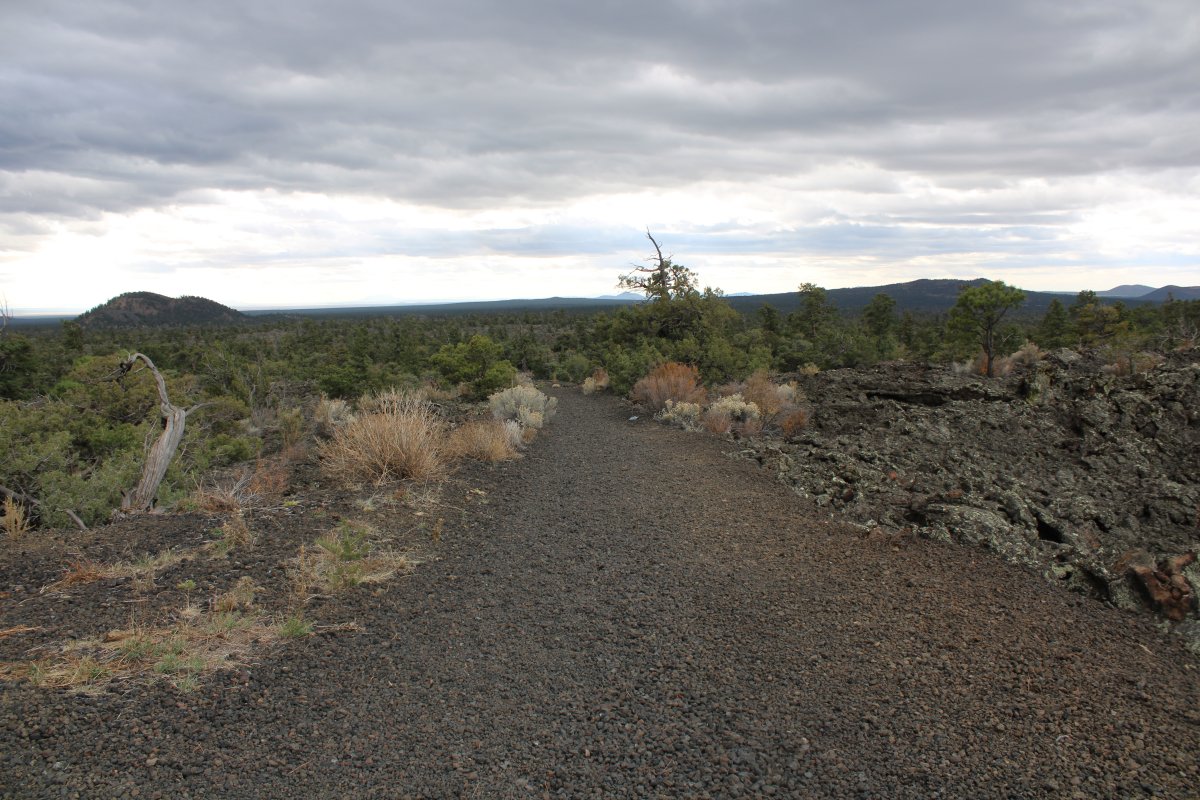 |
|
|
I can see why. The lava is incredibly sharp and jagged.
|
| |
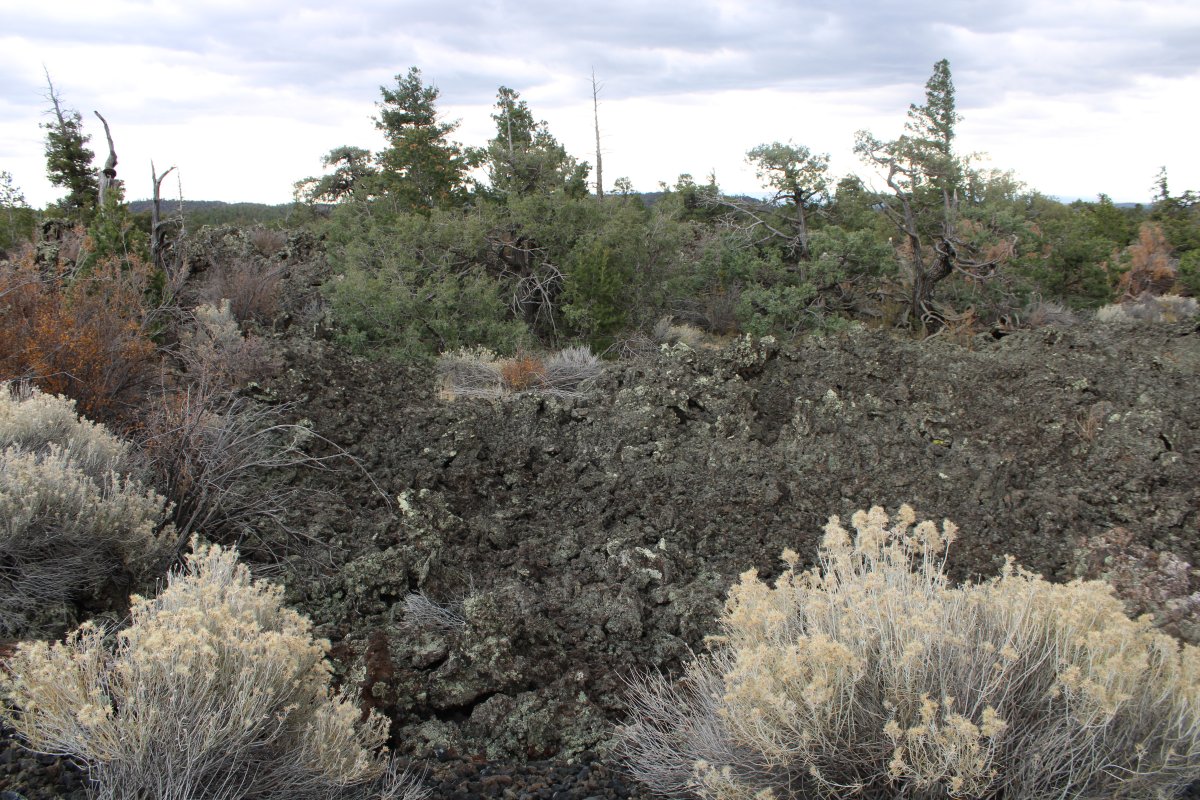 |
|
| Very unusual terrain. |
| |
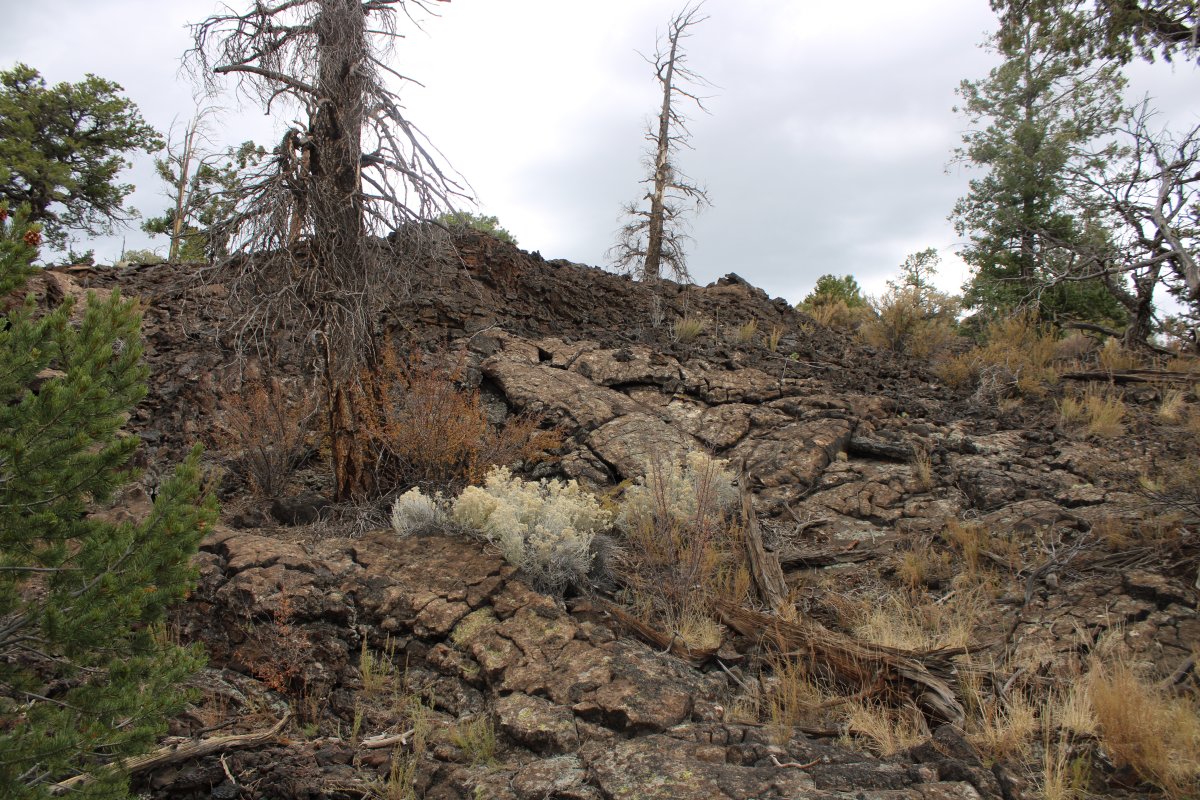 |
|
|
We come to the Ice Cave. You have to descend down the stairs to see it.
|
| |
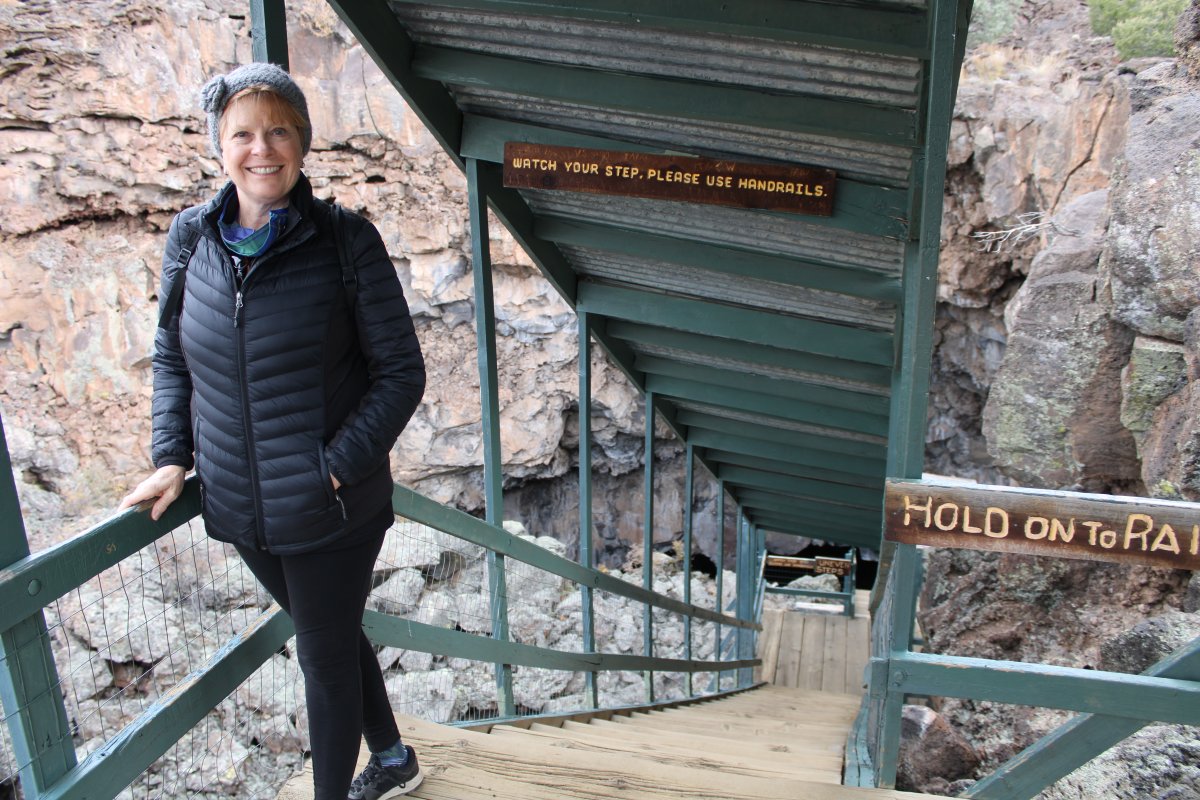 |
|
| Lynnette venturing into the depths of the abyss. |
| |
 |
|
| And there it is! The ice. |
| |
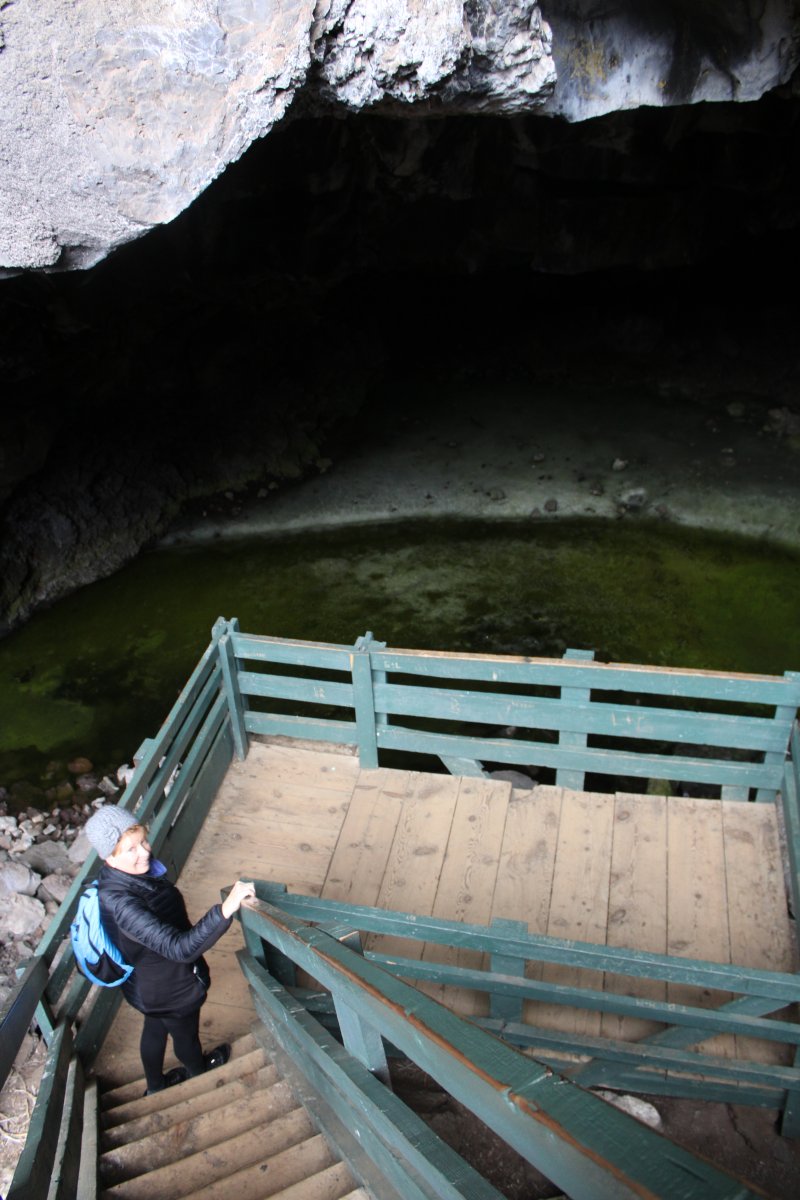 |
|
|
A better look at the ice. A little anticlimactic.
Because the cave is well insulated and shaped to trap frigid air, it is a natural ice box. The temperature in the cave never gets above 31 degrees. As rain water and snow melt seep into the cave, the ice floor thickens. The floor of the ice is approximately 20 feet thick. The deepest ice dates back 3,400 years. The green tint is from Arctic algae.
Ancient Indians and early settlers mined the ice. Ice removal stopped in 1946.
|
| |
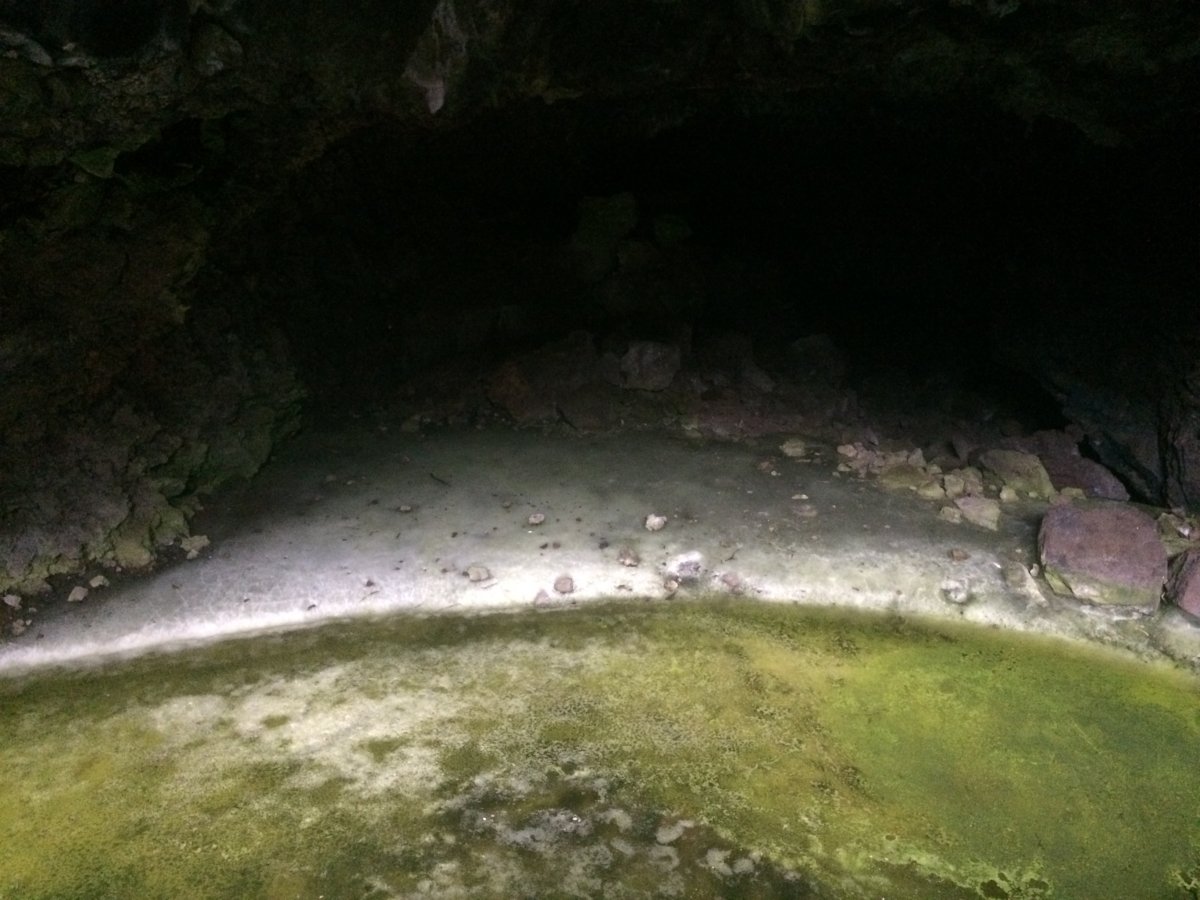 |
|
|
Just outside the ice cave is a section of collapsed lava tube.
|
| |
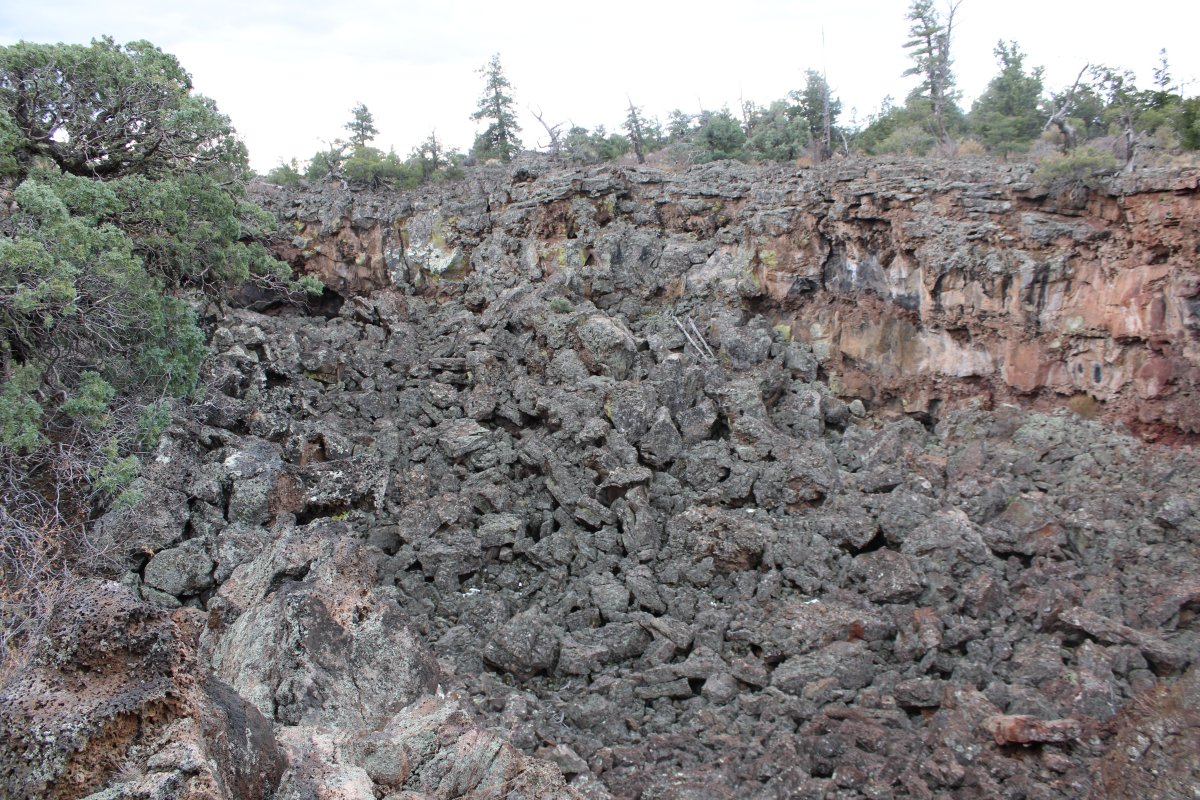 |
|
|
A laval tube is formed when the molten lava pours out of a volcano. The surface hardens, while below, the lava continues to flow. The porous lava acts as an excellent insulator and keeps the lava hot beneath the surface. This creates a pipeline of lava known as a lava tube. The Bandera lava tube is 17.5 miles and is considered one of the longest in North America. Most of the lava tube has collapsed but there are still some caves.
|
| |
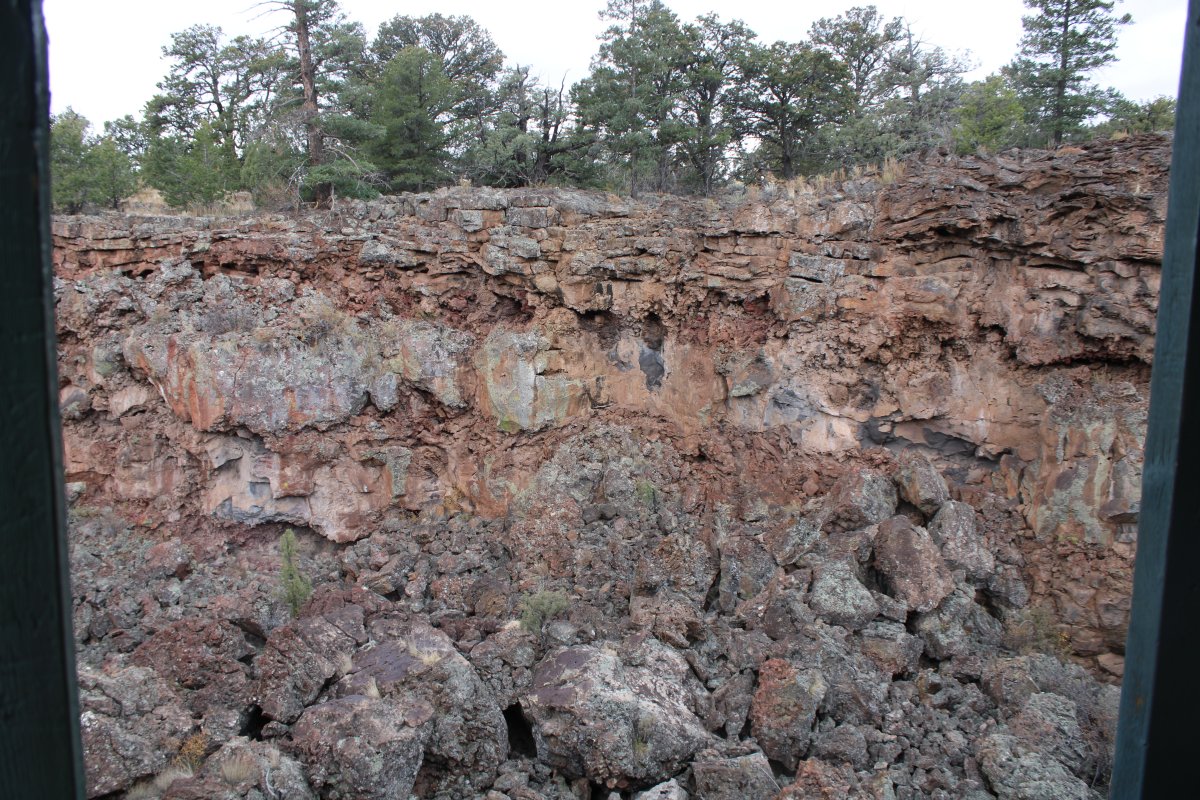 |
|
| |
| |
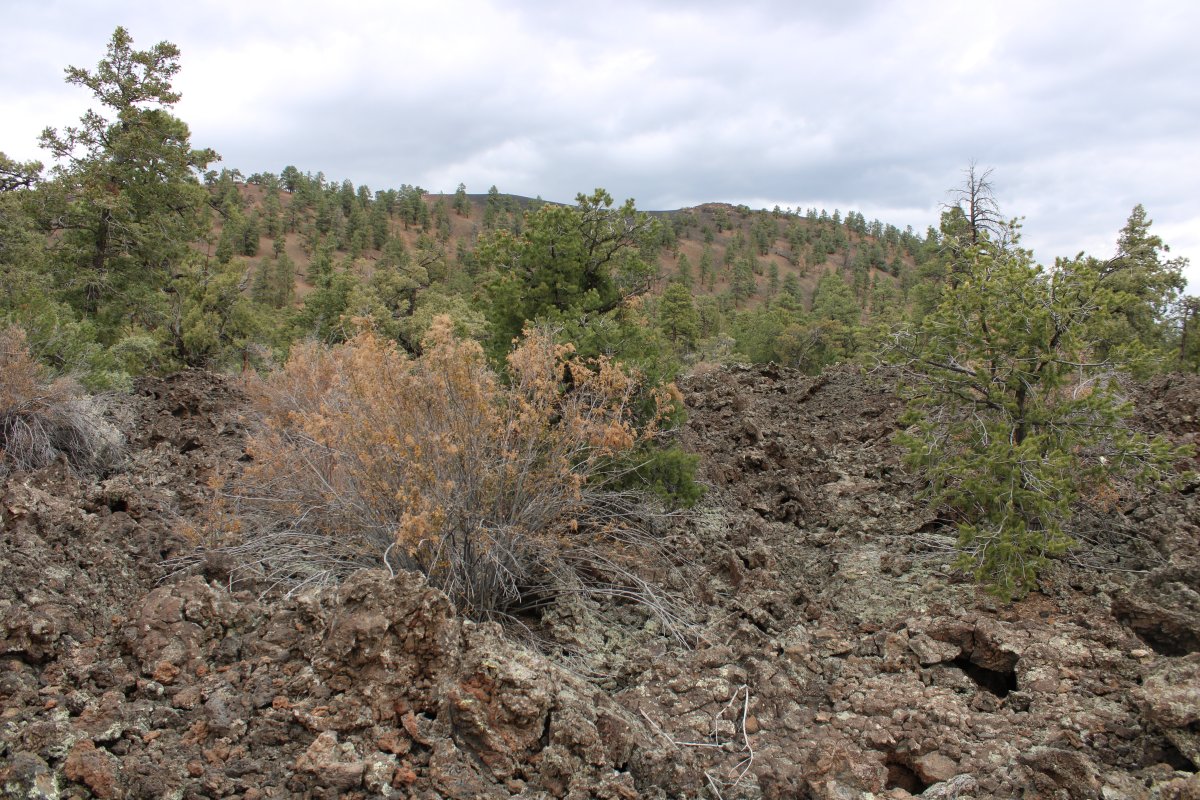 |
|
| |
| |
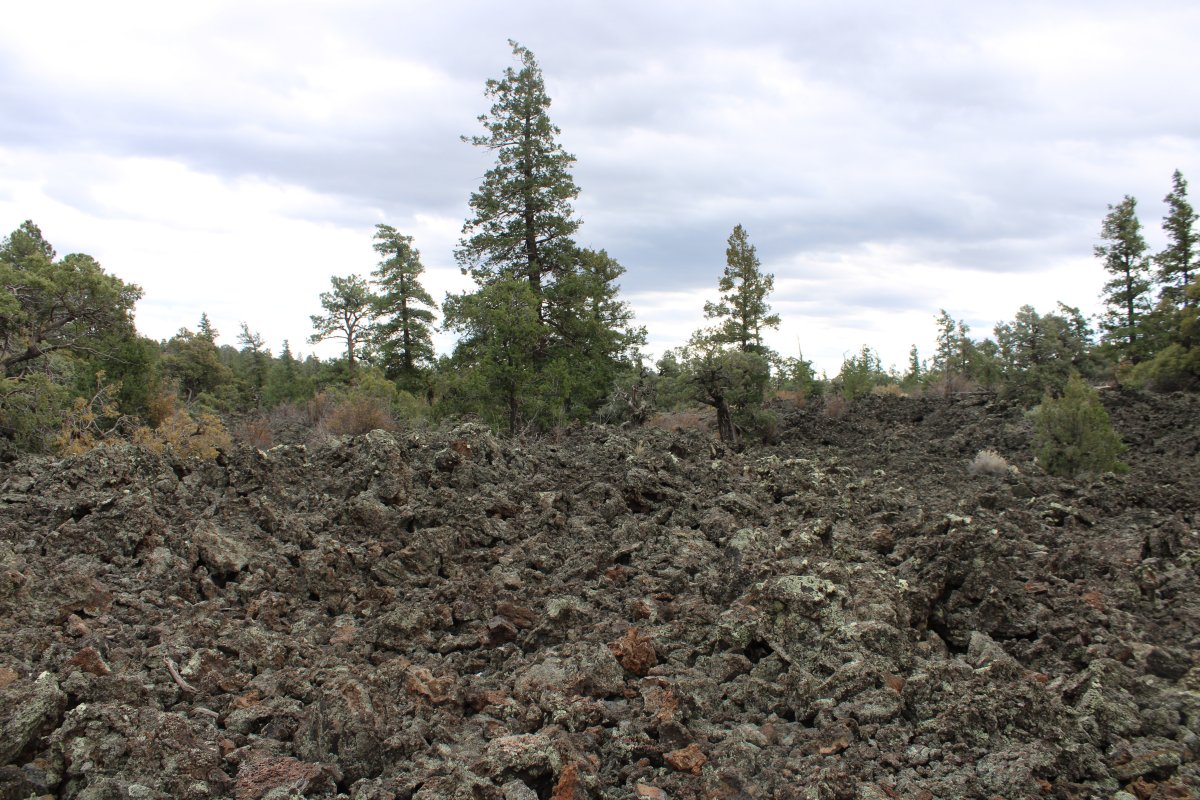 |
|
| Back at the Old Time Trading Post where they had a little museum and gift shop. I found the history of the attraction interesting. |
| |
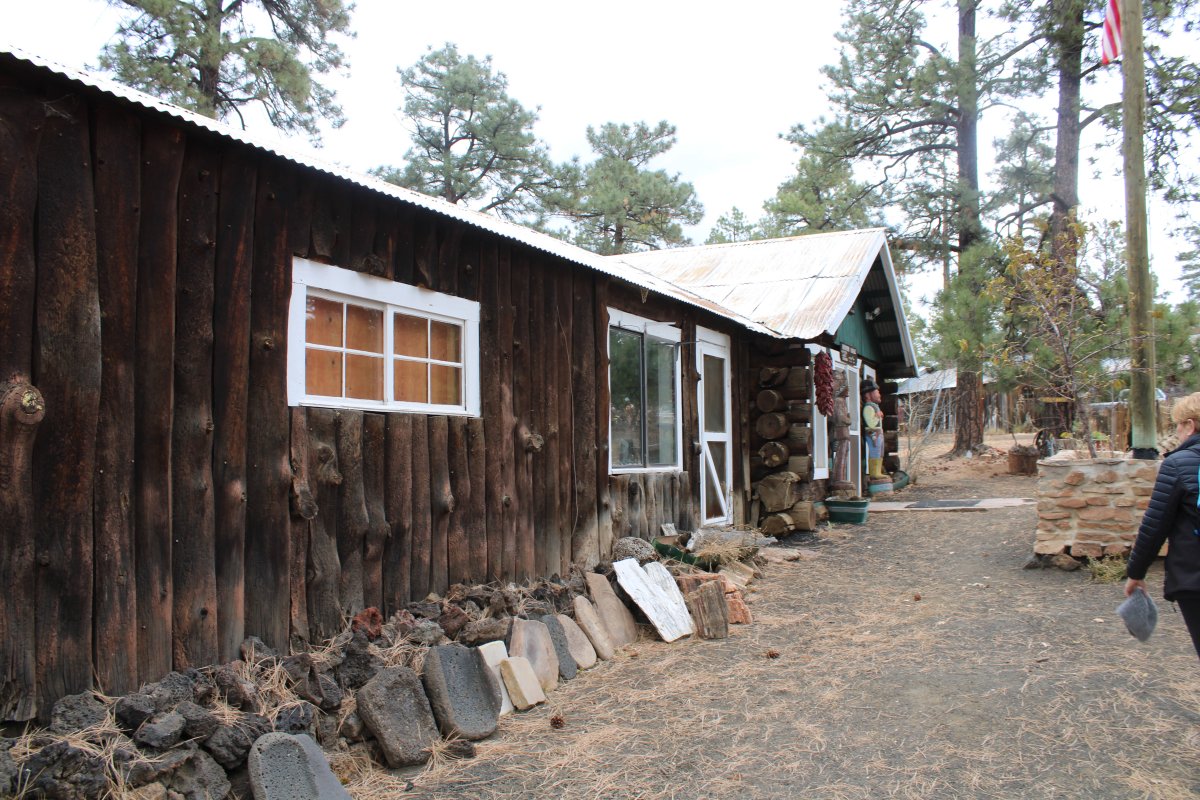 |
|
| |
| |
|
|
|
|
|
|






















